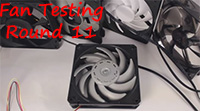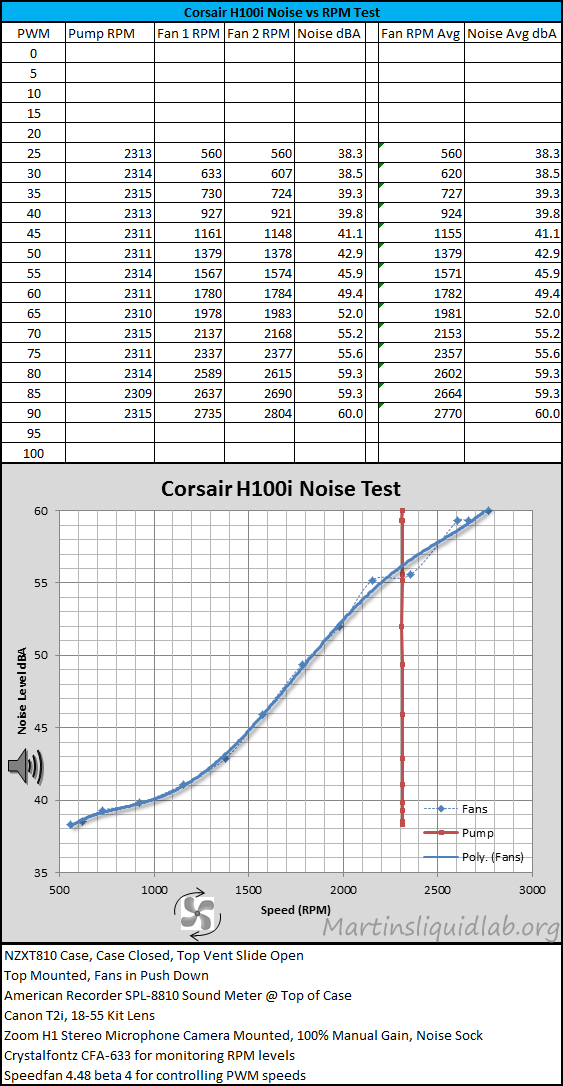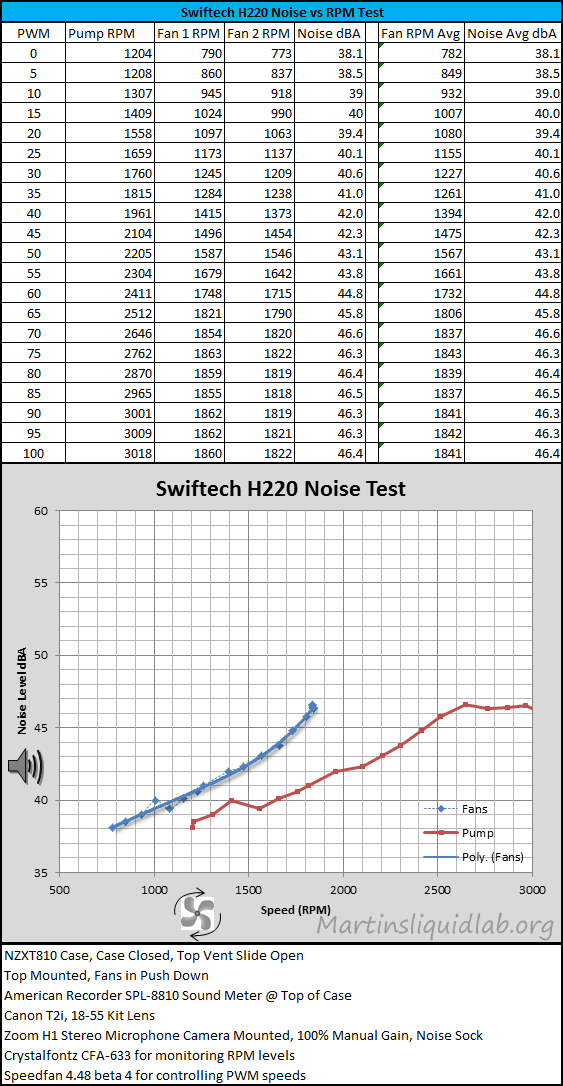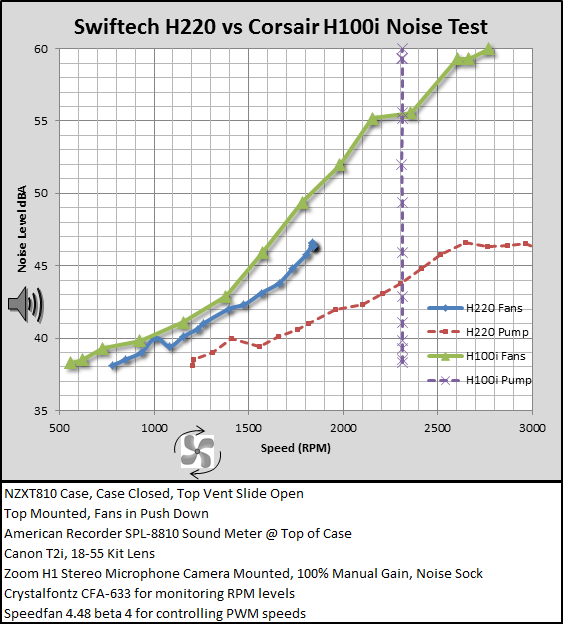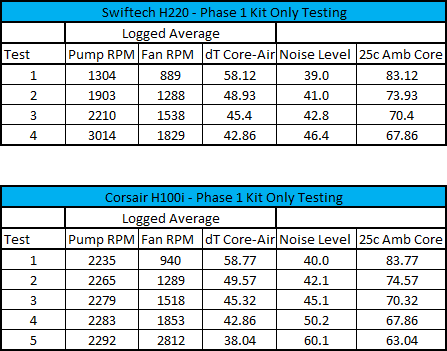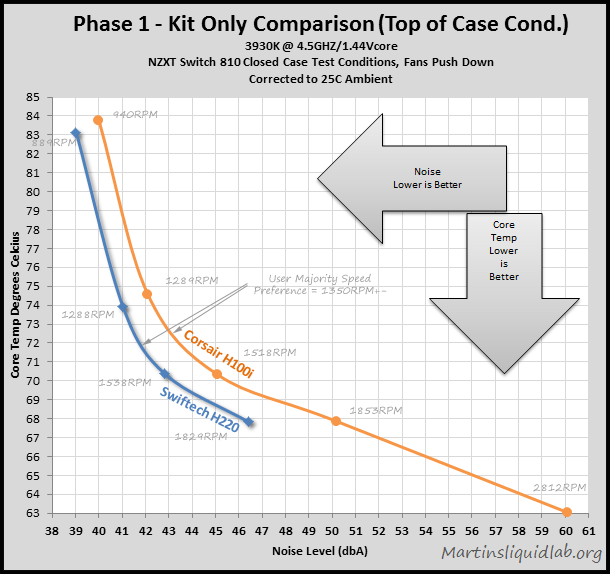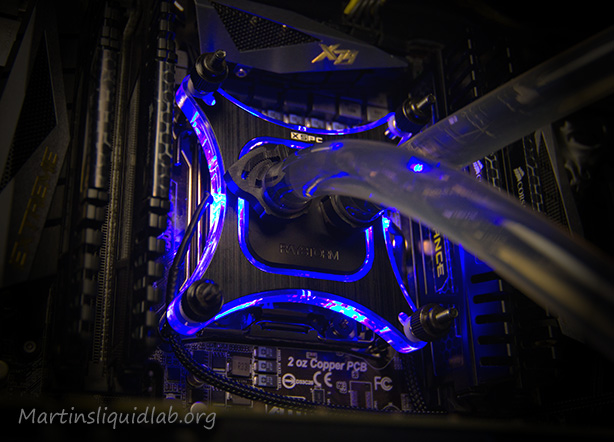Welcome to my round 11 fan testing. This is a fairly small round of fans from the kits I previously tested. Rather than do my normal written form, I’m trying to do this more video based.
Before I do that, I would first like to thank my parts sponsors, without their support this test wouldn’t have happened:
Kit Fans Intro
This video does some physical comparisons of the fans and gives you a good close up look of the fan, sleeving, build quality, etc compared with my previous best performing fan the Gentle Typhoon.
Fan Test Rig Description
This video is just a quick overview of the flow bench and meters used in the fan testing to follow.
Individual Fan Tests
The following videos are of the actual test run on each fan recorded with audio and stepping through 50FPM air flow results. You can now easily adjust two or more fan videos to like air flow numbers and pause them both, then switch back and fort for a direct apples to apples air flow comparison.
Larkooler Kit Fan
Corsair H100i SP120 Kit Fan
Swiftech H220 Kit Fan
XSPC 750 Kit Fan
Servo Nidec Gentle Typhoon AP-15
Extracted Results
These were pulled from the video, by isolating a looped region where air flow was close to the 50FPM increment. This provides the resulting detail read on the meters and a calculated RPM. On the right are some subjective noise quality comments I added as I reviewed and extracted the results.

Summary Radiator Noise Level vs Radiator Air Flow
This is the “Meat & Potatoes” result. While I wish I could measure noise quality in a good quantitative way, that’s really not possible. The next best thing is to compare noise levels when mounted to a radiator at like air flows through that radiator. It takes into account the fans pressure capabilities and puts it in a more real world condition. It’s not perfect, but the best thing I’ve been able to come up with to simplify radiator noise performance. Fans that extend further right are capable of higher air flow maximum results at 12V. Fans with lines lower on the Y axis are producing more air flow per noise level.

No real surprise, but the kit fans all tested relatively the same (most within 3dbA or less differences which fall within the “barely perceptible” level). The Helix fan did for some reason have a bit higher than expected harmonics on the radiator bench which didn’t seem to be as noticeable when actually testing in a case, but it is something I heard a little when trying push only. In push+pull I noticed most of that helix harmonic disappeared.
I would consider the kit results to be relatively similar, they are like most fans and all perform roughly the same. The Gentle Typhoon however does seem to retain that unique ability on a radiator and tested upwards to 8-9dBA lower in noise level at 12V than other fans producing the same flow. The H100i fans and their 2700RPM capability did produce the highest maximum air flow, but it comes at the prices of having a fairly gritty noise quality. Noise quality isn’t captured well in the graph and really only something you can listen for in the videos.
The other aspect I’m now noticing that is missing from this single fan test bench is harmonics between the two same fans. In the thermal testing using the kits and earlier noise testing, I had significant RPM harmonics issues with the H100i fans, but a single fans test scenario completely misses that. This is something I seriously want to consider in fan flow bench future upgrades. I think it is important to capture the “paired fan” harmonics effects as it can be fairly significant. The helix H220 fans did really well paired together in the kit testing, but you just can’t see that in a single fan test.
Also as noted some of the pressure harmonics issues can also be mitigated for by going push + pull. The helix fans don’t show real well in this single push test, but I found when testing four fans in push/pull on a radiator the fans worked very well together. They are not up to Gentle Typhoon silence or build quality standards, but in use I would say they fair better than what the above chart or single fan test result demonstrates.
I also think the Larkooler fan subjectively sounds quieter than the produced dBA. I’m not sure how to describe it, but the sound type is more lower in frequency and seem to contain less motor noise and gritty noise that is more prevalent in the other fans. It has a noise quality that reminds me of the noise blocker series which I’ve always liked. Noise level doesn’t measure anything special, but I think this fan does have pretty good noise quality particularly at slower speeds. This is another one where my own ear and the meters don’t really agree all that well..:)
This at least gives you one more perspective on the sound. I would suggest listening to the fans at like air flow levels and make a decision not based on noise level, but what you perceive as being less irritating. That is likely a combination of frequency, noise quality, and noise level. Don’t put too much weight on the noise level, it is important, but it’s not the entire picture and each person and each setup will be slightly different.
So there is another round and the Gentle Typhoon retains it’s low noise/rad air flow ratio crown. Nothing comes close…
